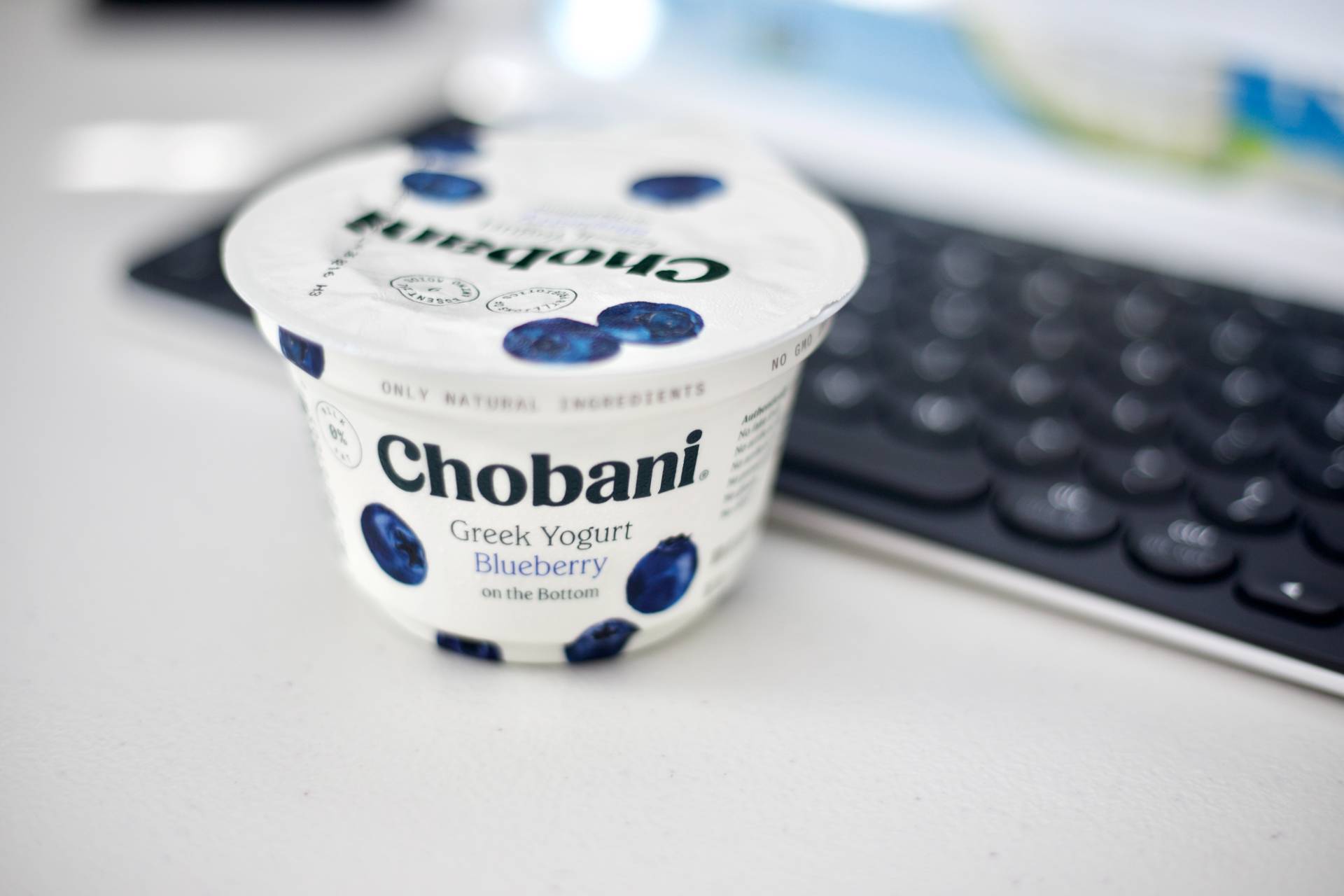Chobani has emerged as a game-changer in the rapidly developing field of consumer packaged goods (CPG) advertising by breaking molds and testing limits. Chobani’s mission-driven approach and forward-thinking founder have caused the company to make waves in the yogurt industry and beyond. This article will trace the career of Chobani’s Global Chief Marketing Officer, Thomas Ranese, and discuss how he intends to use his background in IT and marketing to further expand the company’s reach. Come explore how Chobani is evolving from its yogurt roots to become recognized for more than just its signature product with us!
How Thomas Ranese Got His Start in Show Business
In his current position as Chobani’s Global CMO, Thomas Ranese draws from a wide range of professional experiences. Ranese’s interest in the theater led to an interest in storytelling, community development, and problem solving. As he moved into the field of marketing, he would find these abilities to be invaluable. Ranese’s career path took him to prestigious positions at Google and Uber, where he was instrumental in leading expansion, PR, and CSR efforts. Ranese’s expertise in technology and innovation makes her a valuable asset in the ever-evolving consumer packaged goods industry.
Chobani Is Much More Than a Yogurt Manufacturer
Ranese claims that Chobani operates more like a tech company, despite the fact that on the surface it appears to be a consumer packaged goods company. Chobani’s story of its visionary founder, its focus on products, and its disruptive nature are all traits typically associated with the technology sector. The company’s dedication to its mission and core values, along with its focus on growth, are reminiscent of other successful tech companies like Google and Uber. Ranese thinks that Chobani is in a prime position to investigate how technology and CPG marketing intersect because of its distinctive positioning and culture.
Values and Principles that Guide Chobani’s Marketing
Chobani’s success is due not only to its products, but also to the company’s mission. Ranese stresses the need for a distinct, game-changing value proposition for consumers that extends beyond simple altruism. Consumers connect with Chobani because the company shares their faith in the transformative power of good food and their commitment to providing simple, nutritious, and natural ingredients at fair prices. Ranese has two main goals for Chobani: increasing brand loyalty and expanding the company’s image in the eyes of consumers.
Chobani’s Untapped Potential: Expanding Their Product Line
Chobani has already made a sizable dent in the yogurt market, but Ranese hopes to see the company branch out into other product lines in the future. He plans to expand Greek yogurt’s market dominance to the creamer industry and beyond. Chobani’s goal is to shake up the advertising status quo and carve out its own niche in the consumer packaged goods market by introducing novel collaborations, retail media partnerships, and data-driven marketing strategies. Ranese’s drive comes from his conviction that Chobani can accomplish far more than its current image suggests.
How Today’s Marketing Teams Are Changing the Customer Experience
The customer journey is more intricate and non-linear in today’s digital age. Ranese is aware of the need to rethink marketing strategies generally, not just in the consumer packaged goods sector. He plans to use successful strategies from the technology, consumer packaged goods, and other sectors to revamp Chobani’s outdated marketing department. Upper and lower funnel strategies, as well as the traditional divide between them, are both coming under scrutiny. Ranese’s ultimate goal is to develop a comprehensive and unified strategy for marketing that accounts for the complex nature of shopping and consumer choice.
Customization and Advancement in Retail Media
Retail media networks are becoming increasingly important as a result of the rise of e-commerce and home delivery. Ranese thinks this is a great chance for Chobani to better integrate their social media, marketing, and customer service efforts. Chobani can target its advertisements more precisely and come up with fresh, effective approaches by using information gathered from retail media networks. Ranese also thinks that collaborations with other CPG brands, as opposed to just retailers, can spur additional innovation and business development.
The Hybrid Model: A New Paradigm for Collaboration
When it comes to advertising, Chobani has always relied heavily on its own in-house creative studio. Ranese, on the other hand, has an idea for a hybrid model that brings together the best of both internal innovation and brand management and the synergy of outside agencies. Collaborations with artists, freelancers, producers, and operating partners are all part of this novel approach to partnership. Chobani can reach more people and get more out-of-the-box thinking by expanding the definition of partnership.
Sharing the Chobani Story: Raising Emotional Investment
Ranese places a premium on sharing the Chobani brand’s history and showcasing the company’s many products. Despite the brand’s already substantial popularity, Chobani needs to be seen by the public as more than just a yogurt producer. Ranese’s goal is to highlight the brand’s disruptive potential across multiple categories. Ranese believes he can strengthen connections with existing customers and win over new ones by expanding on the foundation of care and affection that Chobani has already laid.
See first source: Adweek
FAQ
1. Who is Thomas Ranese, and what is his role at Chobani?
Thomas Ranese is the Global Chief Marketing Officer (CMO) at Chobani. He plays a crucial role in overseeing and strategizing Chobani’s marketing efforts and expanding the company’s reach.
2. What is Thomas Ranese’s background, and how did he get involved in marketing?
Thomas Ranese’s background includes a passion for theater and storytelling, which led him to marketing. He gained valuable experience at Google and Uber, where he contributed to expansion, PR, and CSR efforts. His expertise in technology and innovation makes him a valuable asset in the consumer packaged goods industry.
3. How does Chobani differentiate itself in the consumer packaged goods industry?
Chobani operates more like a tech company, with a strong focus on its mission, core values, and disruptive nature. It shares consumers’ beliefs in the transformative power of good food and aims to provide simple, nutritious, and natural ingredients at fair prices.
4. What are the key values and principles that guide Chobani’s marketing strategy?
Chobani’s marketing strategy revolves around a distinct value proposition that extends beyond altruism. The company aims to increase brand loyalty and expand its image in consumers’ eyes by promoting simple, nutritious, and natural ingredients.
5. What are Thomas Ranese’s goals for Chobani’s product expansion?
Thomas Ranese aims to expand Chobani’s product line beyond yogurt, particularly in the creamer industry and other categories. He plans to introduce novel collaborations, retail media partnerships, and data-driven marketing strategies to achieve this.
6. How is Chobani adapting its marketing strategies in the digital age?
Chobani recognizes the complexity of the modern customer journey and aims to revamp its marketing strategies accordingly. It seeks inspiration from successful strategies across various sectors, with a focus on developing a unified marketing strategy that accounts for the evolving nature of consumer choice.
7. What role does retail media play in Chobani’s marketing approach?
Retail media networks are becoming increasingly important, especially in the era of e-commerce. Thomas Ranese sees this as an opportunity to integrate social media, marketing, and customer service efforts more effectively. Chobani can use data from retail media networks to target advertisements precisely and innovate in collaboration with other CPG brands.
8. How does Chobani approach collaboration in advertising?
Chobani has traditionally relied on its in-house creative studio for advertising. However, Thomas Ranese envisions a hybrid model that combines internal innovation and brand management with outside agency collaboration. This approach involves partnering with artists, freelancers, producers, and operating partners to reach a wider audience and foster creative thinking.
9. How does Chobani aim to raise emotional investment and expand its brand presence?
Chobani seeks to share its brand’s history and showcase its diverse product range. Thomas Ranese’s goal is to emphasize the brand’s disruptive potential across multiple categories, strengthening connections with existing customers and attracting new ones based on care and affection.
Featured Image Credit: Jainath Ponnala; Unsplash – Thank you!













